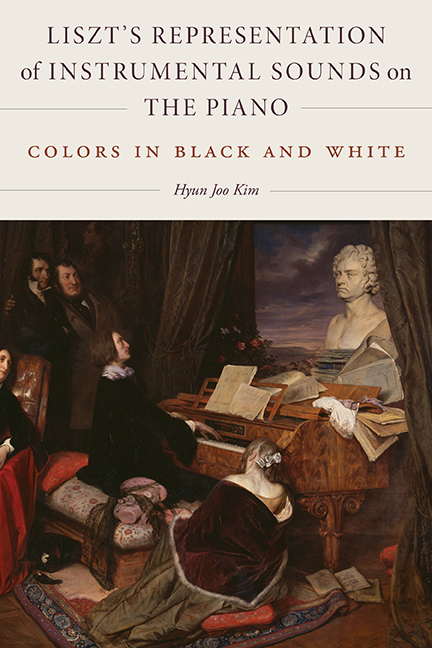Book contents
- Frontmatter
- Contents
- Introduction
- 1 Approaching the Reproductive Arts
- 2 “Partitions de Piano”
- 3 Between “Text” and “Event”: Liszt's Guillaume Tell Overture
- 4 Translating the Orchestra: Liszt's Two-Piano Arrangements of His Symphonic Poems
- 5 Interpretive Fidelity to Gypsy Creativity: Liszt's Representations of Hungarian Gypsy Cimbalom Playing
- Conclusions: Recurring Techniques and Aesthetics
- Appendix: Liszt's Preface to His Piano Arrangements of Beethoven's Fifth and Sixth Symphonies in the Breitkopf & Härtel Edition, 1840
- Notes
- Bibliography
- Index of Liszt's Works by Genre
- Subject Index
Appendix: Liszt's Preface to His Piano Arrangements of Beethoven's Fifth and Sixth Symphonies in the Breitkopf & Härtel Edition, 1840
Published online by Cambridge University Press: 06 September 2019
- Frontmatter
- Contents
- Introduction
- 1 Approaching the Reproductive Arts
- 2 “Partitions de Piano”
- 3 Between “Text” and “Event”: Liszt's Guillaume Tell Overture
- 4 Translating the Orchestra: Liszt's Two-Piano Arrangements of His Symphonic Poems
- 5 Interpretive Fidelity to Gypsy Creativity: Liszt's Representations of Hungarian Gypsy Cimbalom Playing
- Conclusions: Recurring Techniques and Aesthetics
- Appendix: Liszt's Preface to His Piano Arrangements of Beethoven's Fifth and Sixth Symphonies in the Breitkopf & Härtel Edition, 1840
- Notes
- Bibliography
- Index of Liszt's Works by Genre
- Subject Index
Summary
Preface
The name of Beethoven is sacred in the arts. Today his symphonies are universally recognized as masterpieces. Anybody who has a serious desire to expand his knowledge or even to create something new himself, can never analyze and study these symphonies enough. Therefore, every mode of disseminating and making them more widely accessible has a certain merit, and one cannot deny that the many previous arrangements had a certain usefulness, although, on closer evaluation, most prove to be of little value. The worst lithograph, the most erroneous translation, still provides an image, if a vague one, of the genius of a Michelangelo or a Shakespeare. Likewise, in the most inadequate piano reduction, one recognizes now and again the traces, albeit half-smudged, of the master's inspiration. Meanwhile, thanks to the expansion that the piano has achieved in recent times as a consequence of the advances in playing technique and mechanical improvements, it is now possible to accomplish more and better things than had been accomplished before. By means of the vast development of its harmonic intensity, the pianoforte can now, more and more, claim for its own use any and all compositions written for the orchestra. In the scope of its seven octaves, [the pianoforte] is able, with few exceptions, to reproduce all features, all combinations, all figures of the most thorough and most profound composition, all of which leaves to the orchestra with no other advantages than the differences of timbres and massive effects—advantages that certainly are enormous. With this intention I undertook the work that I now hand over to the world. I must admit that I would see it as a rather pointless expense of my time if I had done nothing more than add to the many previous published arrangements of the symphonies a new one done in the usual manner. Yet I hold my time well spent if I have succeeded in transferring to the piano not only the large outlines of Beethoven's composition but also all of its subtleties and smaller features, which so meaningfully contribute to the perfection of the whole. My goal has been achieved when I have done the same as the knowledgeable engraver and the conscientious translator, who can grasp the spirit of a work and thus contribute to the recognition of the great masters and to developing a sense for beauty.
- Type
- Chapter
- Information
- Liszt's Representation of Instrumental Sounds on the PianoColors in Black and White, pp. 159 - 162Publisher: Boydell & BrewerPrint publication year: 2019



